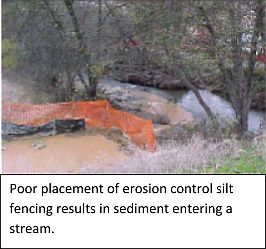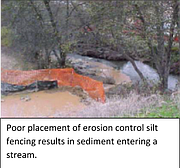Our Gem Coeur d’Alene Lake Collaborative
Coeur d'Alene Press | UPDATED 4 years, 4 months AGO
How Do Roads Affect Water Quality?
When you think of our beautiful lakes and rivers, you may not think about their relationship with roads. Many rural roads and driveways are constructed of nothing more than compacted native soils and if not properly managed, these roads face erosion after a single storm, not to mention an entire season of rain or snow. As road runoff speeds downhill, it picks up soil (sediment) and other pollutants and eventually pours into streams, rivers, and lakes.
Road erosion can be costly to repair and can lower property values. The polluting sediment covers spawning beds, which negatively impacts fisheries. It also contributes harmful nutrients, and triggers plant growth and algal blooms harmful to the natural ecosystem and to people.
Unfortunately, private roads are sometimes constructed by operators who have insufficient knowledge or experience. Fixing a road after it has failed presents expensive and dangerous challenges. High quality road design is invaluable for the safety and longevity of roads and driveways, and for protection of our natural resources.
Stormwater runoff can be slowed by simple control measures and diverted into areas where the sediment is captured and water is filtered back into the ground. These drainage control methods may include water bars, road sloping, and rolling dips. Constructing your road properly is an excellent long-term investment.
Public Access versus Private Roads
Many Idaho public roads were first created as logging roads. Constructed for short term use and in controlled access areas, there was little consideration of alignment or drainage in building these roads. The failure to properly plan these roads is a source of surface water contamination today. Maintenance of public roads depends on who owns the property or right-of-way and the vehicles using the road, such as logging trucks, construction vehicles or everyday traffic. Public road maintenance may involve the US Forest Service, Idaho Department of Lands, local highway districts, or other road departments. Unfortunately, because of limited resources, road maintenance can be overlooked for years. If you observe road erosion or hazardous conditions on a public road, please report it to one of these agencies.
Private driveways and roads are the responsibility of the homeowner. Each road and site are unique and should be evaluated on the ground by an engineer or other professional knowledgeable in stormwater and erosion control techniques. The Stormwater Erosion and Education Program (SEEP) provides best management practices (BMPs) training for construction professionals and offers expertise in access road and driveway maintenance (www.PanhandleSEEP.org) . The Coeur d’Alene LakeASyst manual also provides access road and driveway information for homeowners (available at www.uidaho.edu/ourgem). Following industry guidelines on proper road construction and maintenance saves money and benefits water quality.
A good example of a current public road project employing best management practices is the Kidd Island Road project being carried out by the Worley Highway District. This professional effort tightly adheres to BMPs. Learn more about the project at https://www.worleyhwy.com/.
Thank you for doing your part to avoid water pollution with properly constructed and maintained driveways and access roads!
The Our Gem Coeur d’Alene Lake Collaborative is a team of committed and passionate professionals working to preserve lake health and protect water quality by promoting community awareness of local water resources through education, outreach and stewardship. Our Gem includes local experts from the University of Idaho Community Water Resource Center, Coeur d’Alene Tribe Lake Management Department, Idaho Department of Environmental Quality, Kootenai Environmental Alliance, Coeur d’Alene Regional Chamber and CDA 2030.






